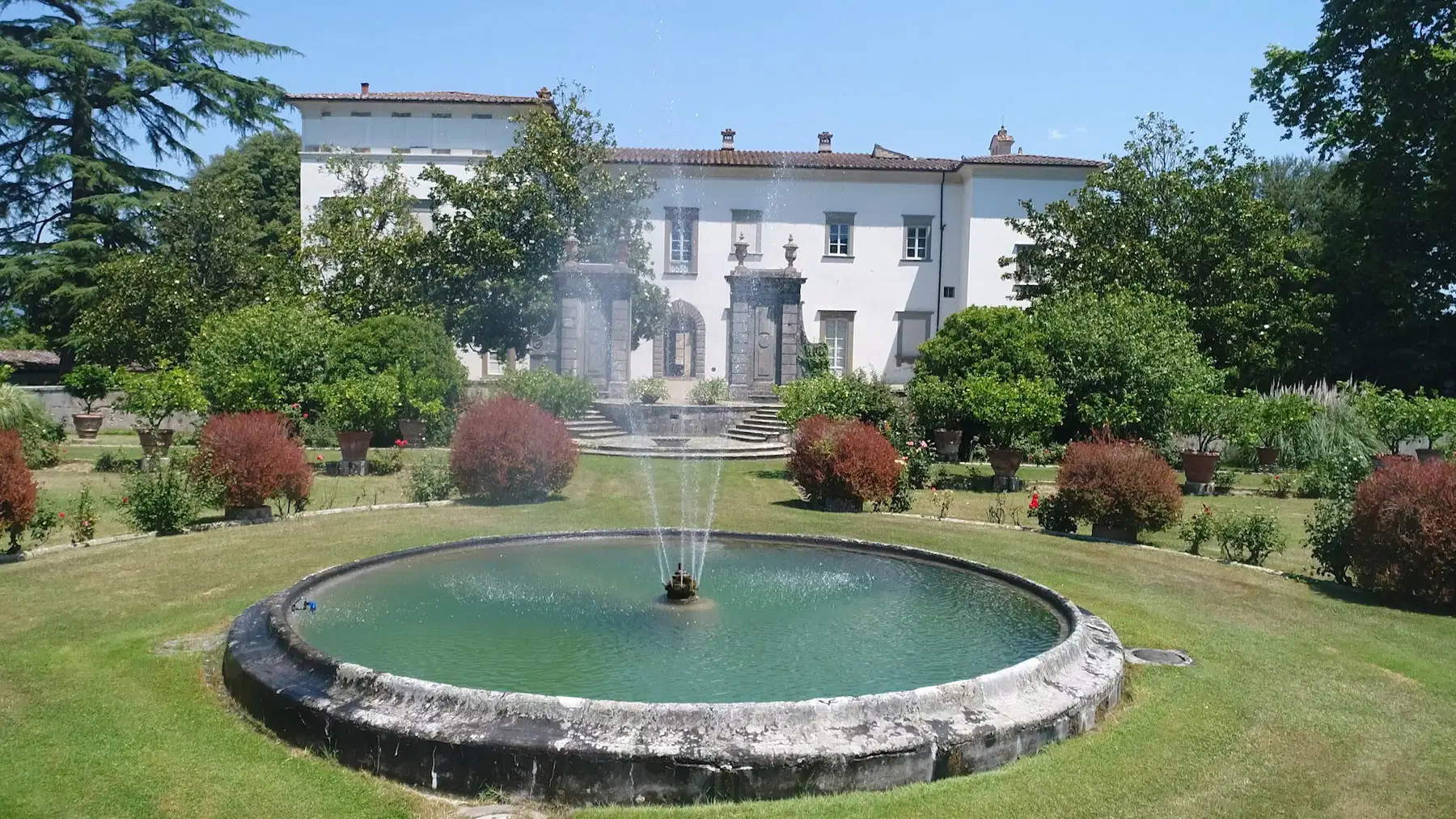After a 22-month restoration involving the UNESCO World Heritage monumental complex in all its parts, the gardens of the Villa Medicea La Magia in Quarrata were inaugurated in the presence of the Mayor of Quarrata Gabriele Romiti, the President of the Region of Tuscany Eugenio Giani and architect Marco Pellegrini, official of the Soprintendenza Archeologia, Belle Arti e Paesaggio for the Metropolitan City of Florence and the provinces of Pistoia and Prato. The Villa’s garden à parterres was then officially reopened, effectively sanctioning the complete reopening of the entire monumental UNESCO heritage complex.
The restoration was made possible thanks to an intervention of 2 million 382 thousand euros financed for 2 million euros by the European Union with Next Generation EU (PNRR) funds and for the remaining portion by the Municipality of Quarrata. Daniel Buren’s work Fountains Walls in 3 Colors for a Hexagon, an in situ work located in the Villa’s park, on the other hand, was restored thanks to a grant from Fondazione CariPt and the Municipality of Quarrata, on the occasion of the ongoing exhibition until July 27, 2025 Daniel Buren: Doing, Undoing, Doing Again organized by Fondazione Pistoia Musei.
Work began in January 2023 and was completed in December 2024: twenty-two months of restoration involving seventeen different companies, involving the monumental complex in all its parts, including the romantic garden and the garden à parterres, the driveway and its lighting, the sculptures and stone components of the garden, the fountains and the lake basin.
Special attention was paid to the historic greenery with new plantings that allowed for the replanting of some species typical of the Medici villas of Tuscany, which had disappeared from the Magia in recent decades, including citrus trees, fruit trees, bulbous plants, and roses. The restoration of the historic greenery in both the romantic garden and the garden à parterres also involved the installation of new irrigation systems and LED lighting. In particular, the romantic garden was completely redefined in terms of the design of the paths, flower beds, and hedges.
Restoration work was carried out on the architectural structures that characterize Villa La Magia by dividing the entire monumental complex into five different functional lots: monumental portal of access to the park and related decorative components; neo-Gothic style chapel of the romantic garden and the retaining wall in the garden à parterres; stone components and sculptures present in the park and plant re-functionalization of the fountains and historical hydraulic components; historical greenery of the garden à parterres and the romantic garden including the realization of irrigation systems and LED lighting and interventions on the monumental trees; road arrangement and lighting of some paths in the park and realization of complementary works.
“A complex restoration, for which I thank the invaluable collaboration of the Soprintendenza Archeologia, Belle Arti e Paesaggio for the metropolitan city of Florence and the provinces of Pistoia and Prato, aimed at the protection, recovery and enhancement of a heritage available to the entire community of Quarrata and beyond, which the Municipal Administration has the duty to preserve and protect for the good of everyone,” said Quarrata Mayor Gabriele Romiti. “We are working to allow Villa La Magia to be lived in and enjoyed more and more, every day of the year, both inside and outside of this extraordinary monumental complex now returned to its full splendor.”
“State funding with PNRR funds represents a unique opportunity to enhance our cultural heritage, and the restoration of the historic gardens is an emblematic example,” said Marco Pellegrini, official of the Soprintendenza Archeologia, belle arti e Paesaggio for the Metropolitan City of Florence and the provinces of Pistoia and Prato. “This important result is the fruit of a shared vision and virtuous collaboration between public bodies, cultural institutions and local administrations. The synergies put in place have made it possible not only to recover places of extraordinary beauty and historical value, but also to return them to the community in a contemporary and sustainable way. This is a concrete demonstration of how PNRR can be an engine of cultural and territorial regeneration.”
Image: Villa La Magia (Quarrata). Photo by Alessandro Pasquali - Danae Project
 |
| Inaugurated the gardens of Villa La Magia in Quarrata, after a restoration involving the entire complex |
Warning: the translation into English of the original Italian article was created using automatic tools. We undertake to review all articles, but we do not guarantee the total absence of inaccuracies in the translation due to the program. You can find the original by clicking on the ITA button. If you find any mistake,please contact us.